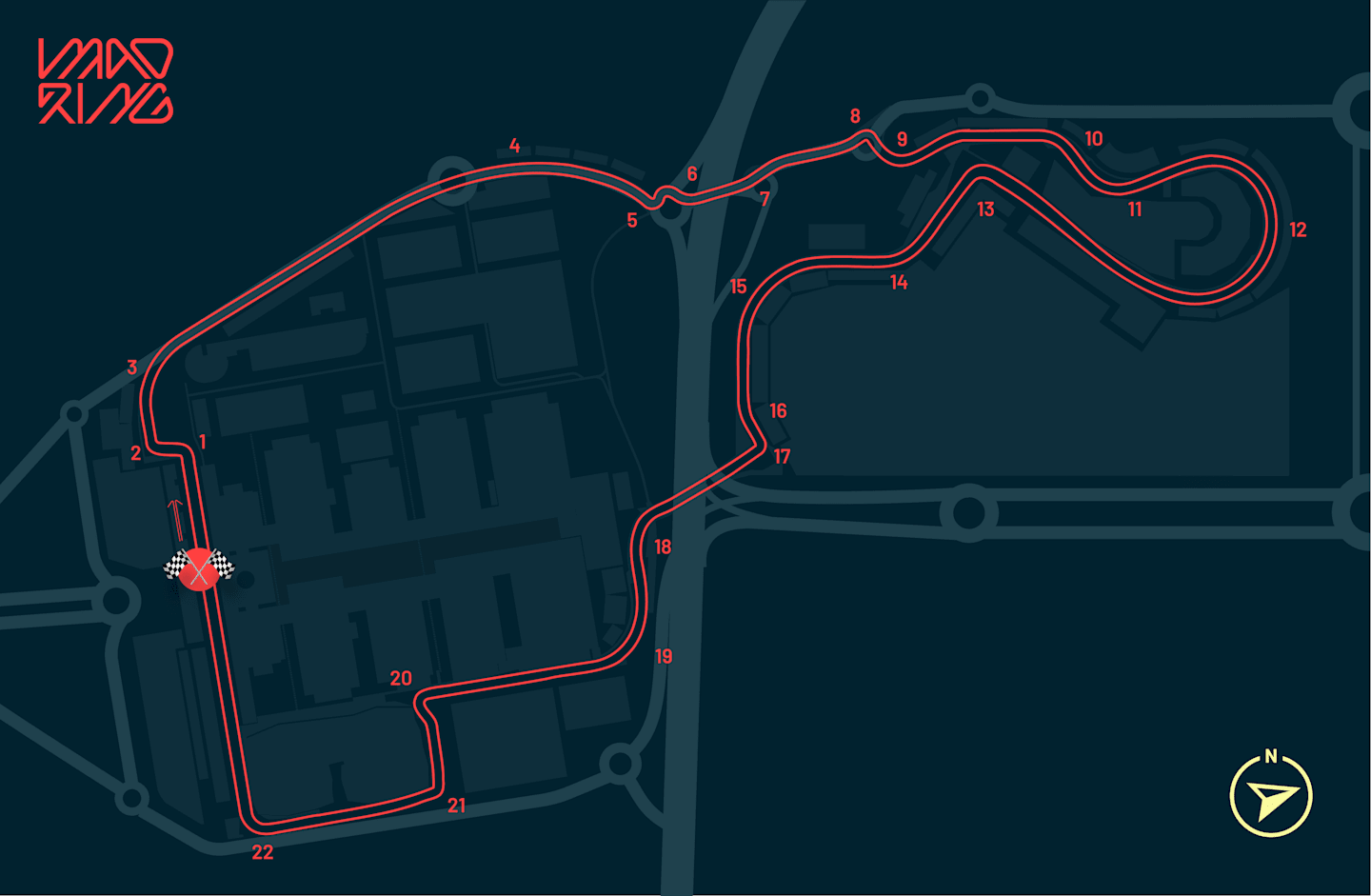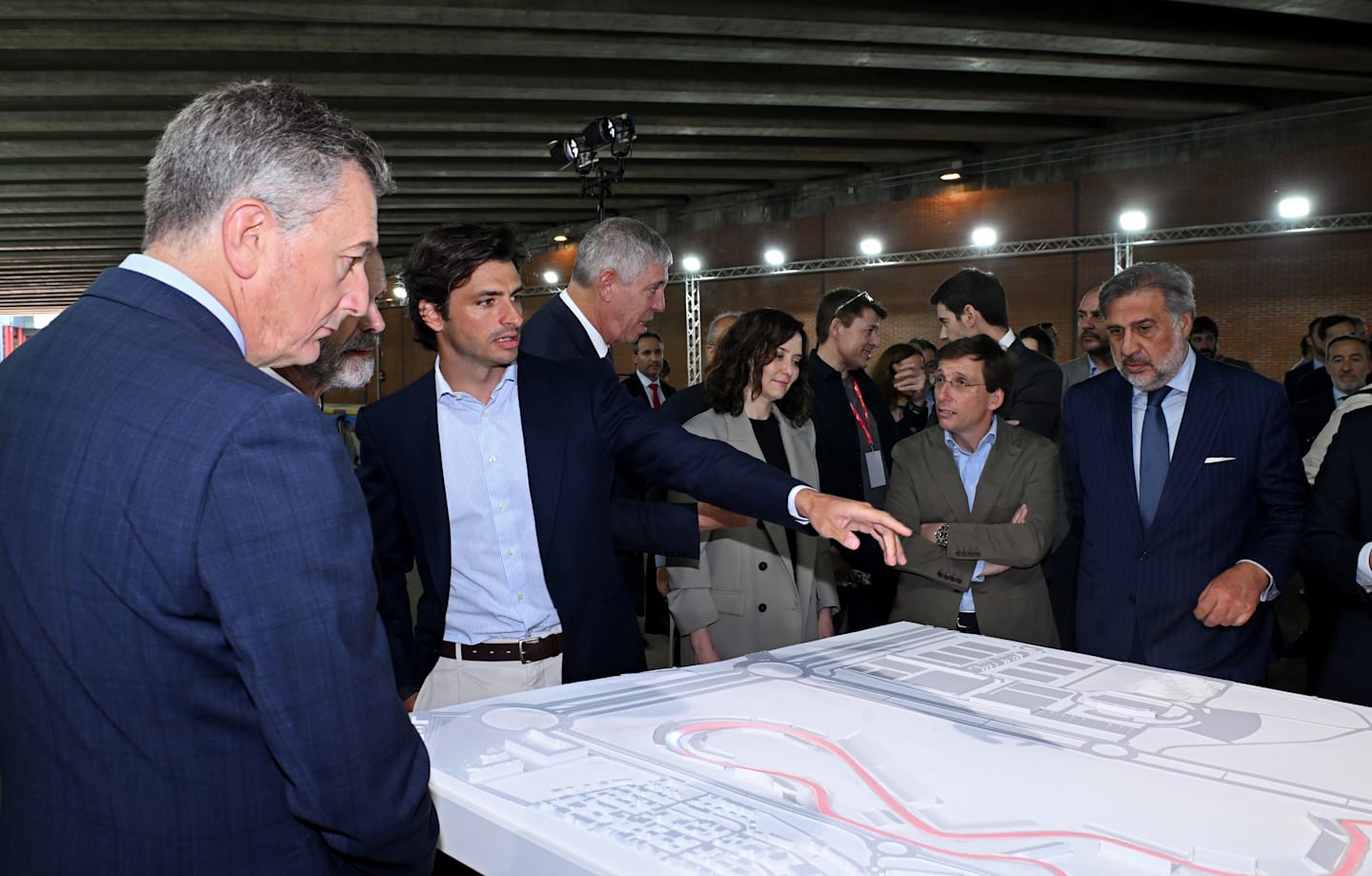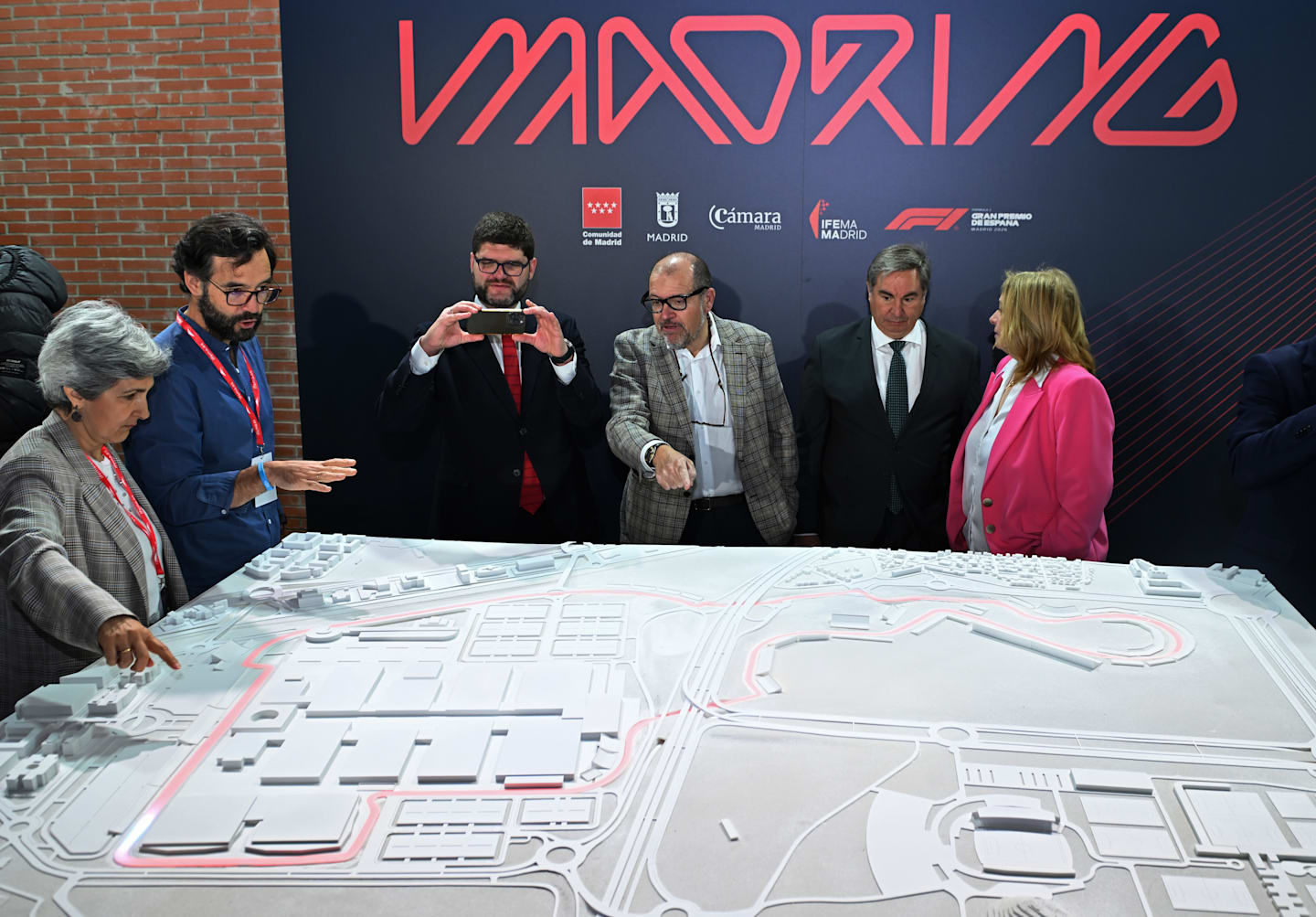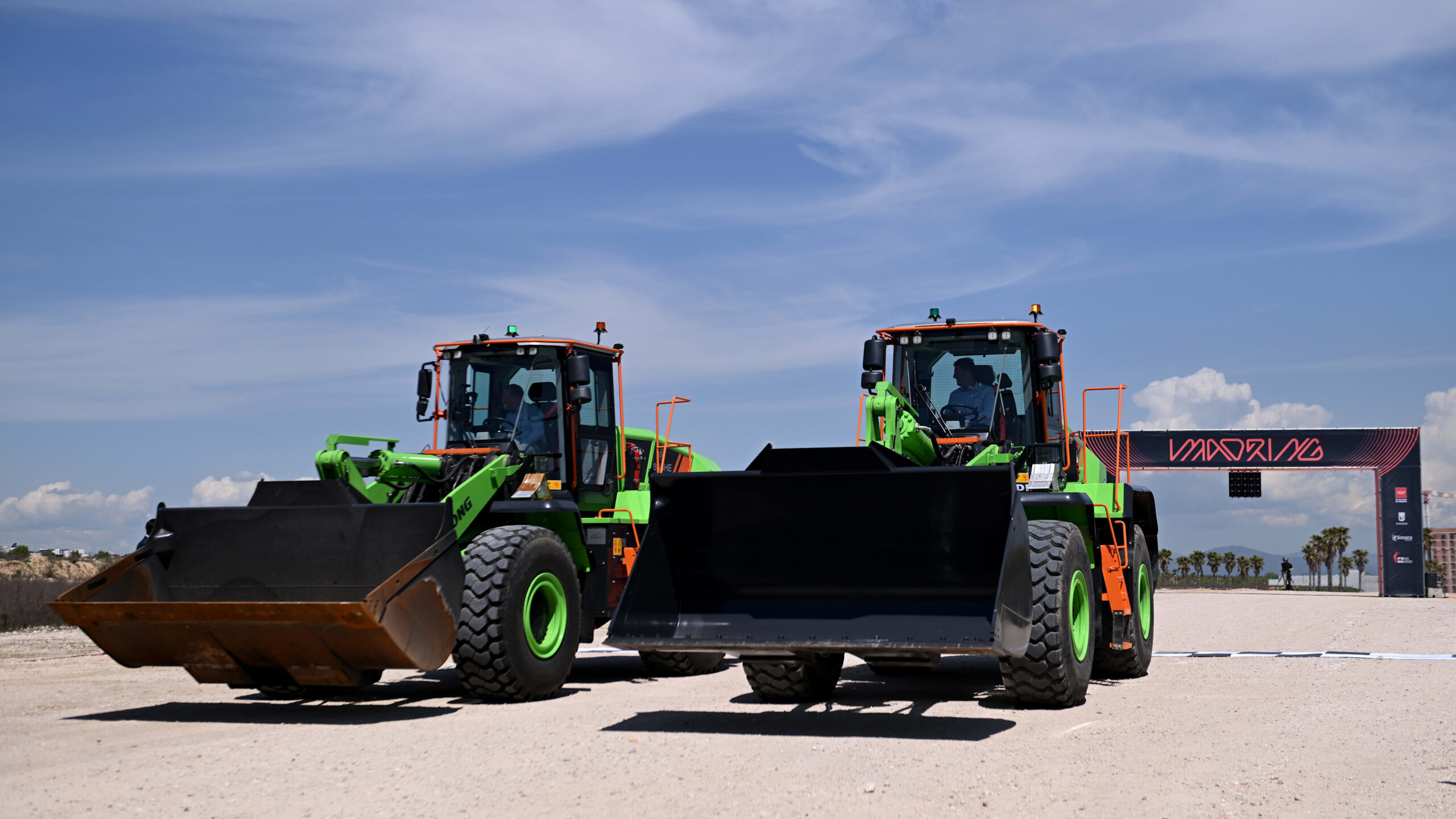Construction of Madrid’s Madring circuit has begun, with organisers in the Spanish capital laying the foundation stone for the venue that will host the Spanish Grand Prix as part of a long-term deal announced last year.
After the approval of the construction license, the ground-breaking event in Valdebebas on Friday was attended by many dignitaries, including President of the Community of Madrid Isabel Diaz Ayuso and Madrid-born Williams driver Carlos Sainz, who was announced as the circuit’s ambassador.
READ MORE: Madrid to join Formula 1 calendar from 2026 in new long-term deal
Madrid will become the only European capital city to host a Formula 1 Grand Prix, with a project that has received strong backing from both the Community of Madrid and the City Council since its inception.
Set to be constructed around the IFEMA MADRID exhibition centre fairgrounds and the expansion north east of the city, the 5.4km layout will feature 22 corners – two more than originally proposed – including La Monumental at Turn 12, a 24% banked bend that stretches 550 metres, which Sainz highlighted as the potential icon of the circuit.

The Madring layout
Ayuso celebrated what she called «the realisation of a dream that puts not only Madrid but all of Spain on the international sports map.
«It is a source of pride to host this motorsport event,» she added, «which will create jobs and attract thousands of visitors who will enjoy not only the race, but also our city’s culture, gastronomy, and lifestyle.»
Madrid’s City Council expressed its excitement at the start of the works, adding: “We’re bringing Formula 1 back to Madrid, and we’re doing it while preserving the spirit of the city and its people. As Rafa Nadal said at the Laureus Awards, Madrid is the European capital of sport — and he’s right.»
Sainz was one of the stars of the ceremony, and in addition to taking part in the symbolic laying of the first stone — which involved an electric excavator race — he expressed his pride in representing his hometown.
“Madrid is the best city in the world and the place I miss the most when I’m away,» he said.
«It was an easy decision to become Madring’s ambassador because I truly believe we can build the best circuit in the world. I have complete faith in Madrid — it’s unbeatable. And we’re going for it.”

Madrid-born Carlos Sainz has been appointed as official ambassador
The track layout was unveiled with a scale model and a video, with the entire circuit being 12 metres wide, except for the main straight and first corner, which are 15 metres wide.
The track will have plenty of overtaking opportunities and mix slow, medium and fast corners, using both public roads and private land, with some sections set to feel more like a street circuit and others more like a permanent set-up – similar to what is seen at the Miami International Autodrome.
READ MORE: Your key questions answered as Madrid joins the F1 calendar from 2026
Madring will feature elevation changes too, with the cars climbing up to the Cárcavas neighbourhood and the circuit’s highest point at 697 metres for Turn 7, before then descending downhill through the fast and technical Bunker section – arguably the most complex part of the lap.
Turn 3, named Hortaleza after the neighbourhood nearby, is a fast bend taken at full throttle before the drivers reach the fastest section of the track at Turn 4 with speeds of 340 kph. They’ll then need to brake hard to hit 80 kph for Turn 5 and another chicane, with the entire stretch from Turn 3 to Turn 5 considered an 837-metre straight.

Officials look at a model of the Madring track
The track even has a tunnel before Turn 18, where guests will enjoy spectacular views ahead of the cars entering the slowest section of the circuit before returning to the main straight and crossing the line to complete the lap.
Located five minutes from the Madrid-Barajas Adolfo Suarez airport, the Spanish Grand Prix will become one of the most accessible events on the F1 calendar, with the circuit just a short commute away by Metro, train, and city lines.
F1 EXPLAINS: Ask an F1 Team Principal with Alpine boss Oliver Oakes
It will have a strong commitment to sustainability — one of the core pillars of the project — and it’s estimated that 90% of fans will be able to travel to the paddock via public transport, while those staying in local accommodation will be a short walk away from the circuit.
The event is expected to generate a projected €450m to the city’s economy per year, with Madring projected to have capacity to host more than 110,000 fans per day across grandstand, general admission, and VIP hospitality, with plans to grow that capacity to 140,000 per day — making Madrid one of the largest venues on the F1 calendar.

RACE TICKETS – MIAMI
Don’t miss your chance to experience the Miami Grand Prix…
